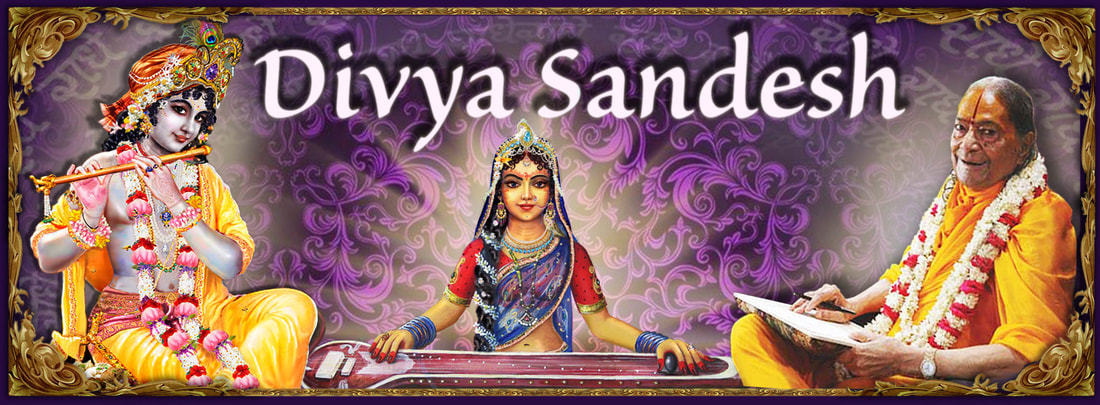Yoga
Yoga is a spiritual science.
योगश्चित्तवृत्ति निरोधः
Yōgaścittavr̥tti nirōdha
Yōgaścittavr̥tti nirōdha
"Yoga is a science to control the mind", as mind is the only source to free us or to bind us. The literal meaning of the word yoga is union. So union of a jeev with God is yoga.
संयोगो योग इत्युक्तो जीवात्म परमात्मनोः
Sanyōgō yōga ityuktō jīvātma paramātmanōḥ
Sanyōgō yōga ityuktō jīvātma paramātmanōḥ

This philosophy is depicted in the Vedas and Tantras as well, Yet, the greatest expounder of Yoga-philosophy is Maharshi Patanjali. He revealed a scripture on Yoga “Patanjali Yoga Shastra”, in which he described the 8-fold spiritual practices to get control on mind. That is called “ASHTANG – YOGA”. There are 8 limbs, which gradually help to get hold on that mind, which is perpetually moving towards the world in the hope of attaining happiness. These 8 limbs are mentioned below -
Yam(यम)
1. Practice of yoga begins with Yam (यम). Mind is always aimlessly racing around in the world. Principles of Yama are meant to slow down the speed of mind and help it focus. The Yamas are twelve;
- Ahimsa (अहिंसा) - non-violence
- Satya (सत्य ) - truthfulness
- Asteya (अस्तेय ) - non stealing,
- Brahmcharya (ब्रह्मचर्य) - vow of celibacy
- Aparigraha (अपरिग्रह) - non possessiveness
- Maun (मौन) – Observance of the rule of silence to cultivate more energy in order to assimilate the philosophy of yoga
- Lajja (लज्जा) – Inhibition in performing any action, which does not lead towards God.
- Chhama (क्षमा) – forgiveness.
- Abhaya (अभय) - fearlessness
- Astikata (आस्तिकता) - faith in God
- Asangta (असंगता) - detachment from material objects and beings
- Sthirata (स्थिरता) – Stability
Niyam(नियम)
2. Twelve rules are also recommended in Yoga to maintain self-discipline. These are called Niyam (नियम) . These are proposed since it is impossible to achieve anything worth attaining without observing discipline. These rules are
- Cheshta (चेष्टा) – putting in effort to attain the goal
- Shouch (शौच) – purity of mind and body
- Santosh (संतोष) – contentment
- Japa (जप) – chanting
- Tapa (तप) – endurance
- Shraddha (श्रद्धा) - complete faith
- Atithi sewa (अतिथि सेवा) – hospitality
- Yagya (यज्ञ) - Fire sacrifices
- Hari pooja (हरी पूजा) – worship
- Teertha Yattra (तीर्थ यात्रा) – pilgrimage
- Paropkaar (परोपकार) – benevolence
Aasan(आसन)
3. Exercises to keep body healthy are called aasan (आसन). It is important to maintain a healthy body in order to further enable the mind to meditate for longer hours.
Pratyahaar(प्रत्याहार)
4. The practice of withdrawing the senses from material matters to help the mind to meditate on God is called pratyahaar (प्रत्याहार).
Pranayam(प्राणायाम)
5. Exercises the promote control over the panch pran (5 types of air in the body that controls the bodily functions) are called pranayam (प्राणायाम).
Dhyaan(ध्यान)
6. Trying to focus on the divine form of God is called dhyaan (ध्यान).
Dharana(धारणा)
7. When mind can easily focus on God it is called dharana (धारणा). In this stage the yogi finds stability in meditation.
Samadhi(समाधि)
8. Deep meditation, wherein the practitioner gets totally engrossed in divine thoughts being oblivious to the external world or even their own physical presence is called Samadhi (समाधि).
There are two kinds of Samadhi of a yogi:
There are two kinds of Samadhi of a yogi:
In Samapragyat (संप्रज्ञात) Samadhi the seeds of sanskars (impact of deeds performed in past lives) still remain.
Whereas in Asampragyat (असंप्रज्ञात) Samadhi all the seeds of past impression burn eternally.
Those who pursue the path of Gyan desire to merge in Nirakar Brahm called attaining Sāyujjya mukti. Unlike the gyanis yogis do not aspire to become one with God. They worship Lord Maha Vishnu and attain the divine bliss and divine abode Baikunth of Maha Vishnu [1].
Those who pursue the path of Gyan desire to merge in Nirakar Brahm called attaining Sāyujjya mukti. Unlike the gyanis yogis do not aspire to become one with God. They worship Lord Maha Vishnu and attain the divine bliss and divine abode Baikunth of Maha Vishnu [1].
Aspirants following the path of yoga meditate in 2 different ways
Sagarbha (सगर्भ) Dhyan is when yogi meditates upon the divine form of Maha Vishnu in mind.
Nirgarbha (निर्गर्भ) Dhyan is when yogi meditates upon the divine form of Maha Vishnu in Kchheer Sagar
Yogis of sagarbh and nigarbha both are of 3 kinds. Thus, altogether there are six types of yogis.
Sagarbh Dhyan culminates into Sagarbh prapta – siddhi. Nirgarbh Dhyan culminates into nirgarbh prapta – siddhi (निर्गर्भ प्राप्त सिद्धि). These are those who realize God and have become eternally free from Maya.
- Yogarurukchhu (योगारुरुक्षु) - Who are practicing yoga to attain perfection.
- Yogaroorh (योगारूढ़) - who have achieved perfection in their practice of yoga
Sagarbh Dhyan culminates into Sagarbh prapta – siddhi. Nirgarbh Dhyan culminates into nirgarbh prapta – siddhi (निर्गर्भ प्राप्त सिद्धि). These are those who realize God and have become eternally free from Maya.
In modern age, there are several misconceptions about yoga. Some of those misconceptions are: Yoga is
- merely a science to keep body healthy in a natural way without medicines.
- a way to maintain attractive lean body.
The authentic practice of Yoga starts from the Yam and Niyam. A precursor to stepping on the path of yoga is to control the mind and senses. This is a spiritual science to attain a spiritual result which is to become free from Maya and realize the Brahm - Supreme God. It is not confined to the Asana (postures) only.
The first five steps are meant to prepare the body and mind for the practice of yoga, which comprises of control on mind and senses to detach mind from the allurements of this mundane world. Last three i.e. Dhyan. Dharana, Samadhi are purely related to the practice of realization of God.
Practicing yoga without following all the eight steps of Yog-Shastra does not lead to spiritual upliftment.
Several people go all out in their practice of yoga but to no avail due to lack of proper knowledge of this spiritual science. All this is due to the fact the teachers of yoga also do not have adequate knowledge of yoga, its precents and purpose.
The first five steps are meant to prepare the body and mind for the practice of yoga, which comprises of control on mind and senses to detach mind from the allurements of this mundane world. Last three i.e. Dhyan. Dharana, Samadhi are purely related to the practice of realization of God.
Practicing yoga without following all the eight steps of Yog-Shastra does not lead to spiritual upliftment.
Several people go all out in their practice of yoga but to no avail due to lack of proper knowledge of this spiritual science. All this is due to the fact the teachers of yoga also do not have adequate knowledge of yoga, its precents and purpose.








